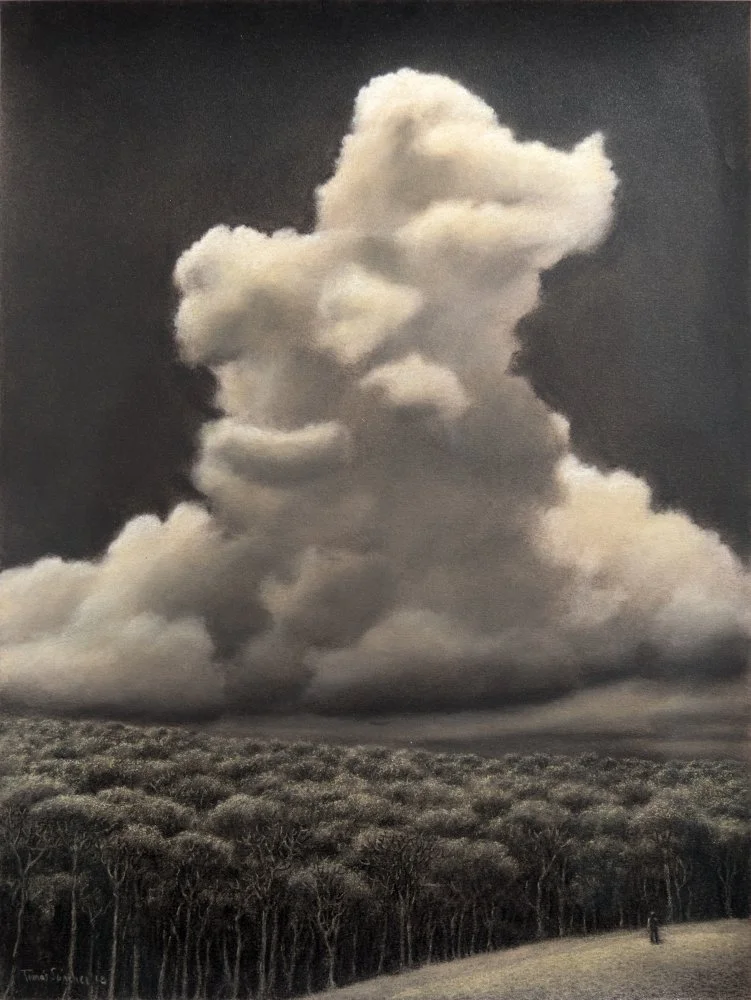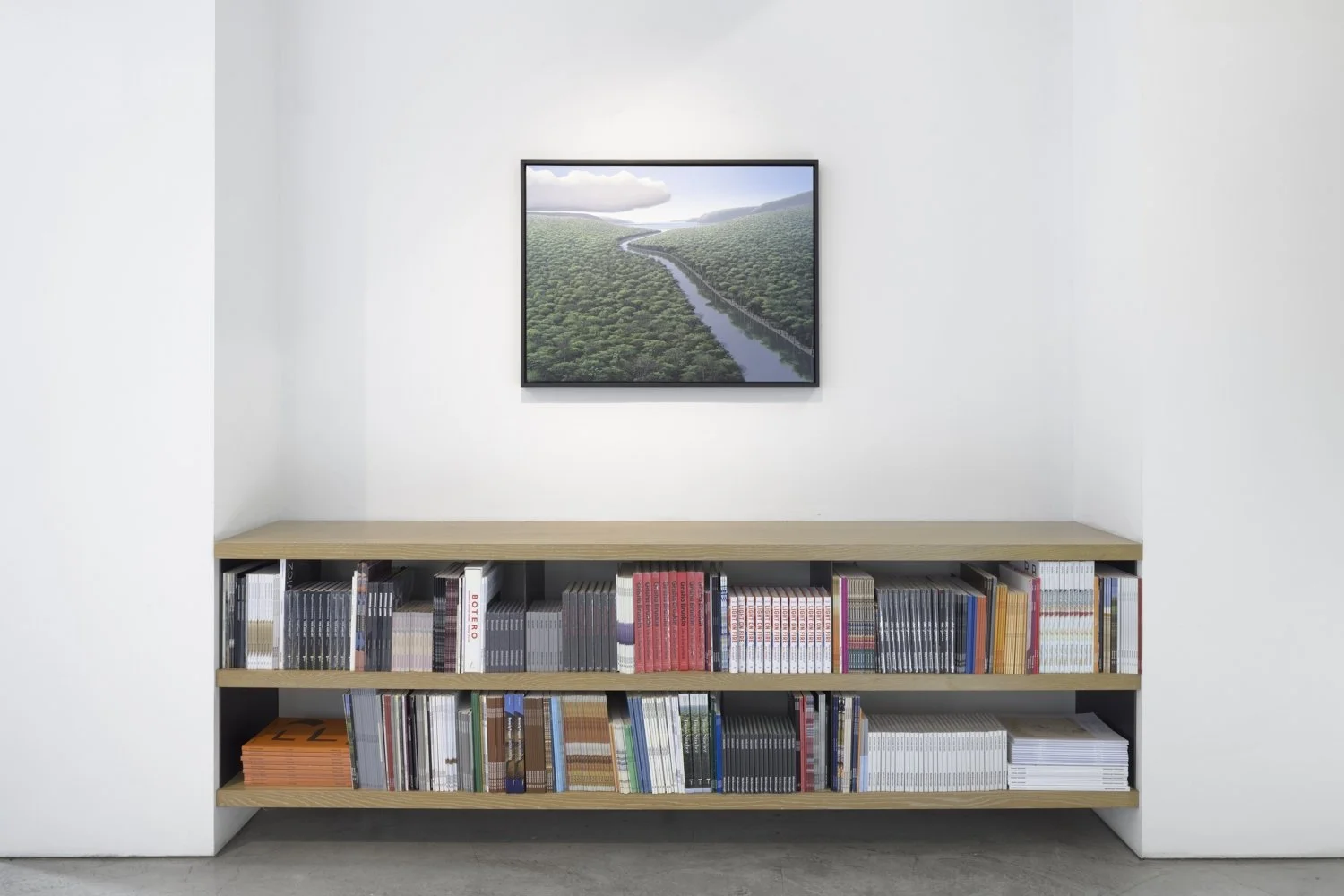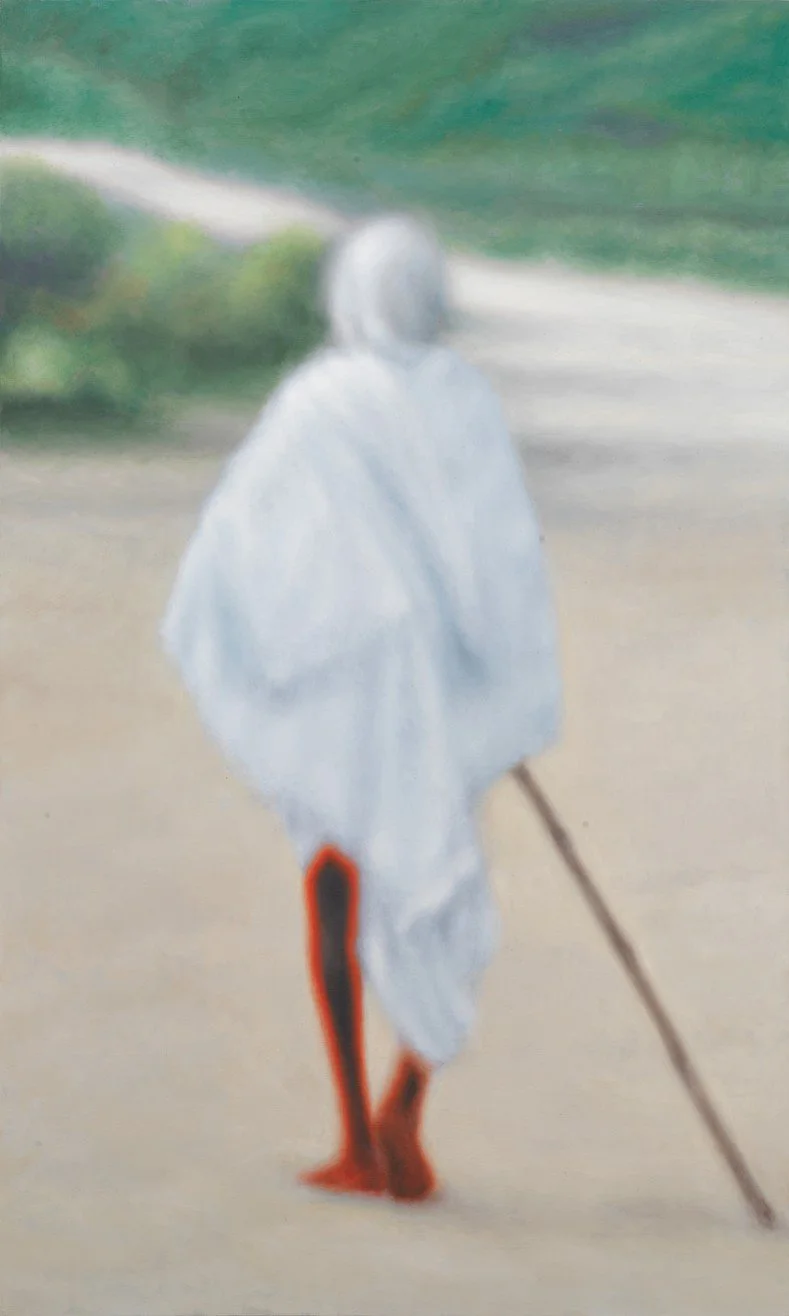Tomás Sánchez
“Inner Landscape”
New York, 545 West 25th Street
nner Landscape shows the prescient juxtaposition of two parallel bodies of work: paradise on earth and vast fields of trash. Tomás Sánchez’s hypnotic vistas cannot be attributed to any specific geographic location; they are entirely imaginary. Often alluding to his many travels and his garden, these paintings are, first and foremost, guided by his daily practice of meditation, which he has maintained for nearly five decades. Sánchez writes:
Con la puerta abierta, 2015 Acrylic on canvas
When I enter a state of meditation it’s as if I’m in a jungle or a forest; the mind enters into a great exhilarated state, like an exuberant jungle where you can experience fear, desire, anguish—all types of emotions and feelings. When I begin to feel that there’s a point of inner consciousness everything goes toward that inner space, that inner river. Everything goes toward that place of quiet, that realm of tranquility within the forest where there is a lake.
Installation view P: Lance Brewer
Sánchez’s recent compositions are notably anchored in the vocabulary of American abstraction and Minimalism. Within these paintings, there are inherent compositional tensions and harmonies, beyond the meticulous detail, that guide the viewer through space. Each painting on view is the result of months—often years—of the artist’s dedicated attention.
Providing a contrast to Sánchez’s more well-known subjects are three of the artist’s large-scale trash landscapes. Many of Sánchez’s followers are familiar with his pristine, paradisiacal, renditions of nature, but have been less exposed to these stark depictions of trash that portray humanity’s incessant consumption and violence towards the environment. This body of work is essential to Sánchez’s practice as he began producing these works in the early 1980s while living in Cuba and has continued the series to this day. These contrasting series on view strengthen one another and articulate the artist’s singular and contemporary approach to landscape painting.








